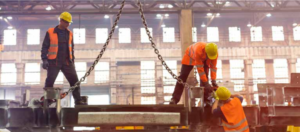India’s TMT Steel Bars
On the back of sustained domestic demand, India’s steel industry witnessed robust growth in the last 10–12 years. Since 2008, production has gone up by 75% while domestic steel demand has grown by around 80%. Steel-making capacity has also increased in tandem, and the growth has been organic.
The Indian government has always supported the steel industry and introduced the National Steel Policy in 2017, which envisions the growth trajectory of the Indian steel industry till 2030–31. The broad contours of the policy are as follows:
TMT Steel Bars -making capacity is expected to reach 300 million tonnes per annum by 2030–31.
- Crude steel production is expected to reach 255 million tonnes by 2030–31, at 85% capacity utilisation.
- Production of finished steel to reach 230 million tonnes, assuming a yield loss of 10% for conversion of crude steel to finished steel – that is, a conversion ratio of 90%.
- With 24 million tonnes of net exports, consumption is expected to reach 206 million tonnes by 2030–31.
- As a result, per capita steel consumption is anticipated to rise to 160 kg.
- An additional investment of INR 10 lakh crore is envisaged.

While the National Steel Policy, 2017, is a vision document of the Indian government, it nevertheless emphasises the growth potential of the tmt bars industry.
While the National Steel Policy, 2017, is a vision document of the Indian government, it nevertheless emphasises the growth potential of the Indian steel industry.
As per data from the Joint Plant Committee, at the end of 2018– 19, India produced 110.9 million tonnes of crude steel.9 In order to reach 255 million tonnes of crude steel production by 2030–31, production needs to grow at a CAGR of about 7.2%.This is easily achievable given that in 2018–19, crude steel production grew by 7.6%.
Therefore, the growth potential that the government has charted out in the National Steel Policy, 2017, is in sync with the industry’s growth trajectory.
Naturally, the next question that arises is where the demand that can sustain the production levels envisaged in the policy will come from. This requires a sectoral approach. The approximate sector-wise demand for steel and job market is increase.
